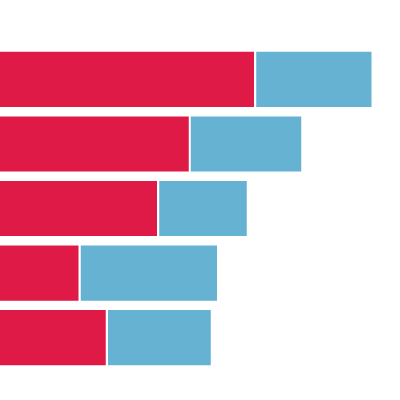Regional inequalities in housing problems
27 April 2023

- Nearly half of households in London (44.3%) experience at least one housing problem.
- This is in contrast to just over a quarter of households in the East Midlands (27.8%).
Problems with people’s homes – non-decent homes, overcrowding and unaffordable costs – can influence their health. Non-decent homes include problems such as damp and cold, which can directly harm health. Overcrowding and poor affordability can cause stress and influence mental health. If someone experiences more than one of these problems, this risks further harm to their health.
This chart shows the proportion of households experiencing housing problems in each region in England.
- Households in London have the highest risk of experiencing one or more housing problems (44.3%). This is 13 percentage points higher than Yorkshire and the Humber, which has the next highest risk at 31.4%.
- Nearly one in 10 households in London (8.8%) experience more than one housing problem. This is twice as high as the North West (at 4.6%), which has the next highest proportion of multiple housing problems.
- London has the highest proportion of housing in the private rented sector, which may partly explain why there are more housing problems compared with other regions.
- Households in the East Midlands are the least likely to experience housing problems, with just over a quarter of households affected (27.8%).
This chart highlights the regional dimension of housing problems, which tend to be more common in London. There is a need to address housing problems of overcrowding, non-decency and affordability across England with a particular focus in London.
- Non-decent homes are defined as those with a Category 1 hazard – as assessed by the Housing Health and Safety Rating System (HHSRS) – that are not in a reasonable state of repair, lack reasonably modern facilities or are not warm enough (do not provide a reasonable degree of thermal comfort).
- Overcrowding is measured by comparing household members against a bedroom standard. This standard allows for the number of rooms a household needs, based on the relationship status of adults in the household, and the age and sex of the children.
- Unaffordable housing is where more than a third (33%) of household income (net housing benefit) is spent on housing costs.
Source: Ministry of Housing, Communities & Local Government, English Housing Survey, 2018/19







